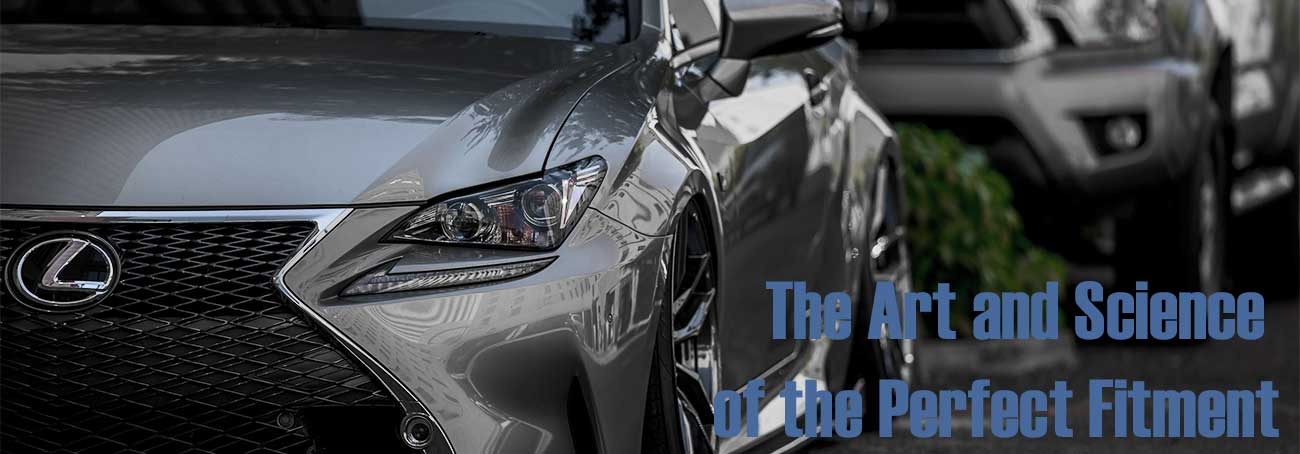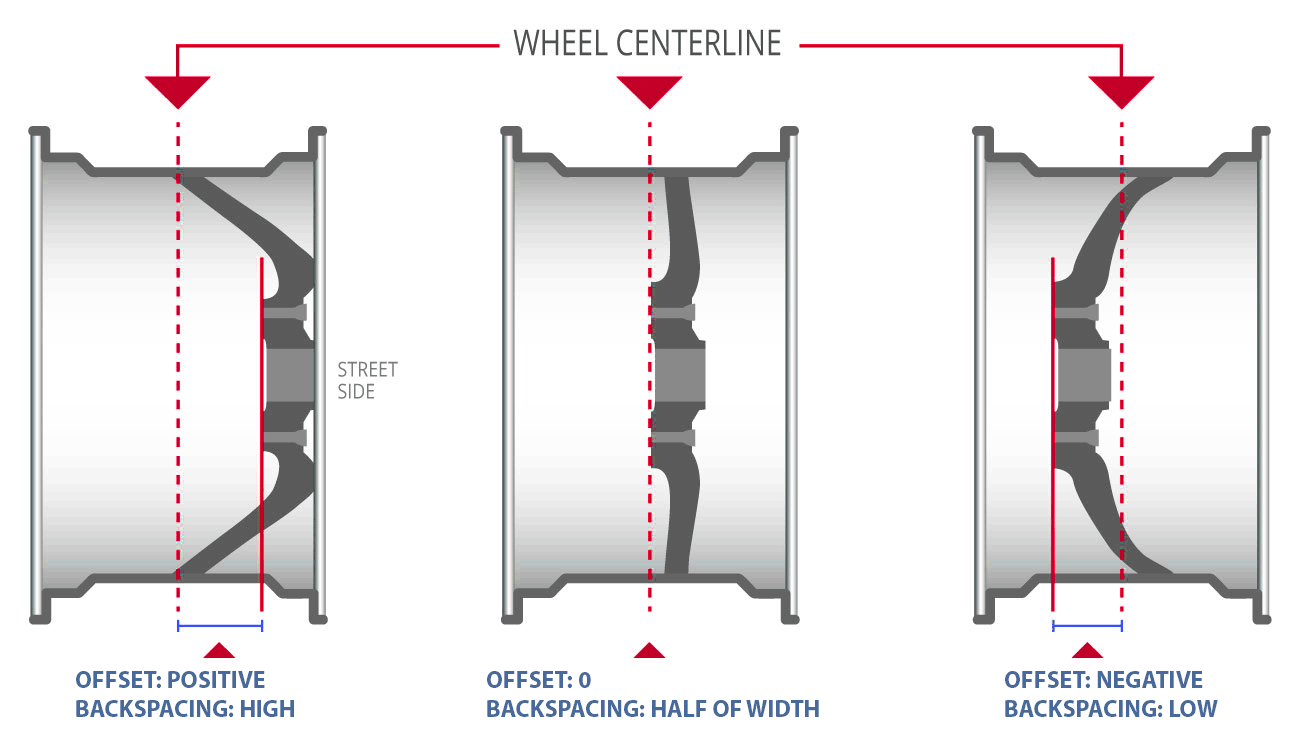What is a wheel offset
Offset, or what the industry refers to as "ET" is the distance between the center of the rim, and the mounting surface of the wheel that contacts the vehicle hub. A simple way to understand offset, is the lower the offset, the more the wheel will stick out, likewise, the higher the offset, the more the wheel will tuck in. For example, and Honda Civic generally uses around a +40mm offset. So if you put a +15mm offset wheel on the car, the wheel is likely to stick out about 1 inch. If you've ever noticed a lifted truck or a low rider with wheels sticking out, its because the offset of the rim is very low and in many cases so low that they are negative offsets.
Its important to note that offset is normally measured in millimeters and backspacing is normally measured in inches.
What is the difference between wheel offset and backspacing
Measuring backspacing is another way to determine how far in or out a wheel will sit. Backspace and offset both measure the wheel positioning, but in different ways. You can convert backspacing to offset by using a fairly simple calculation.
How to measure the offset or backspacing of a rim
To measure backspacing or offset, you'll lay the wheel face down, and lay a straight edge across the back of the wheel. Using the straight edge as an indicator for the back of the wheel, you will measure the "Backspacing" which is distance from the back of the wheel to the back pad (the part of the wheel that mounts up to the vehicle hub).
To measure offset, you'll have another step. Start by measuring the entire rim width. Be sure not to use the published width of the wheel found stamped on the wheel. The actual width of the wheel is normally 1 inch more than the published width since the industry publishes rim width by measuring the distance between bead seats, which is where the tire meets the rim. To determine offset, use the following calculation:
offset = 25.4 x (backspacing -.5 x full rim width)
So for instance, if you have a wheel that has a size of 20x9, then the actual width is most likely 10 inches wide. If the backspacing is 7 inches, then the calculation is as follows
offset = 25.4 x (7 - .5 x 10)
offset = 50.8mm
Its important to note that backspacing is normally measured in inches
How does rim offset and rim width affect fitment
Finding the perfect wheel and tire fitment requires a careful calculation of wheel width, wheel offset and tire size. Element Wheels has used 60 years worth of combined knowledge base to determine the ideal fitment for your vehicle. The positioning of the face, or outside of wheels with varying widths can be accomplished by selecting different offsets. For instance the positioning of the face of the wheel of a 20x10 +25mm offset is the same as a 20x10.5 with a +31mm offset. This is because the extra width of the 20x10.5 inch wheel is compensated by the higher offset bringing the wheel in an extra 1/4 inch putting the face of the wheel in the same position as the 20x10. These adjustments of offset to accomplish the perfect look on your car need to be carefully considered when trying to put wider wheels on because other factors need to be considered such as tire size and suspension parts, and wheel well clearance.



